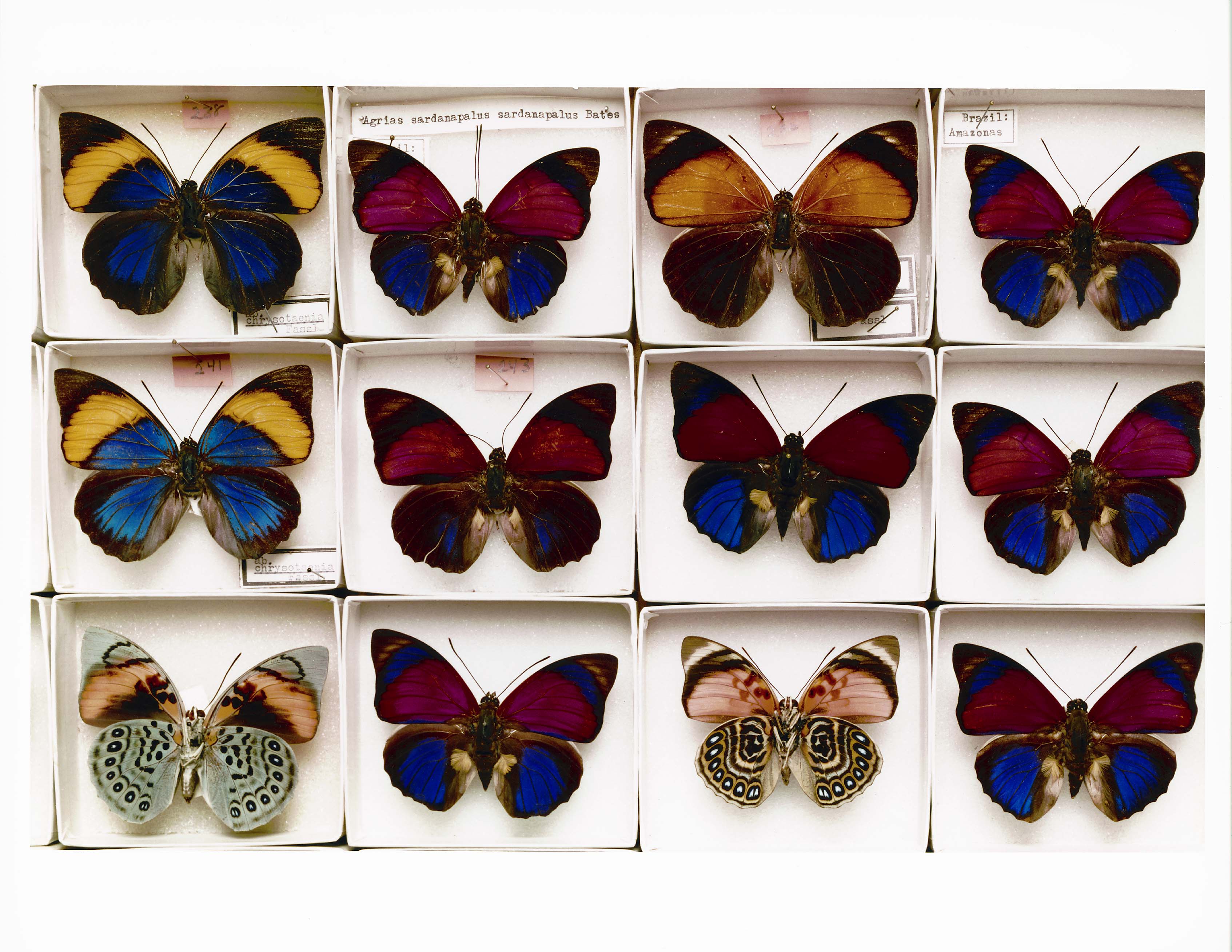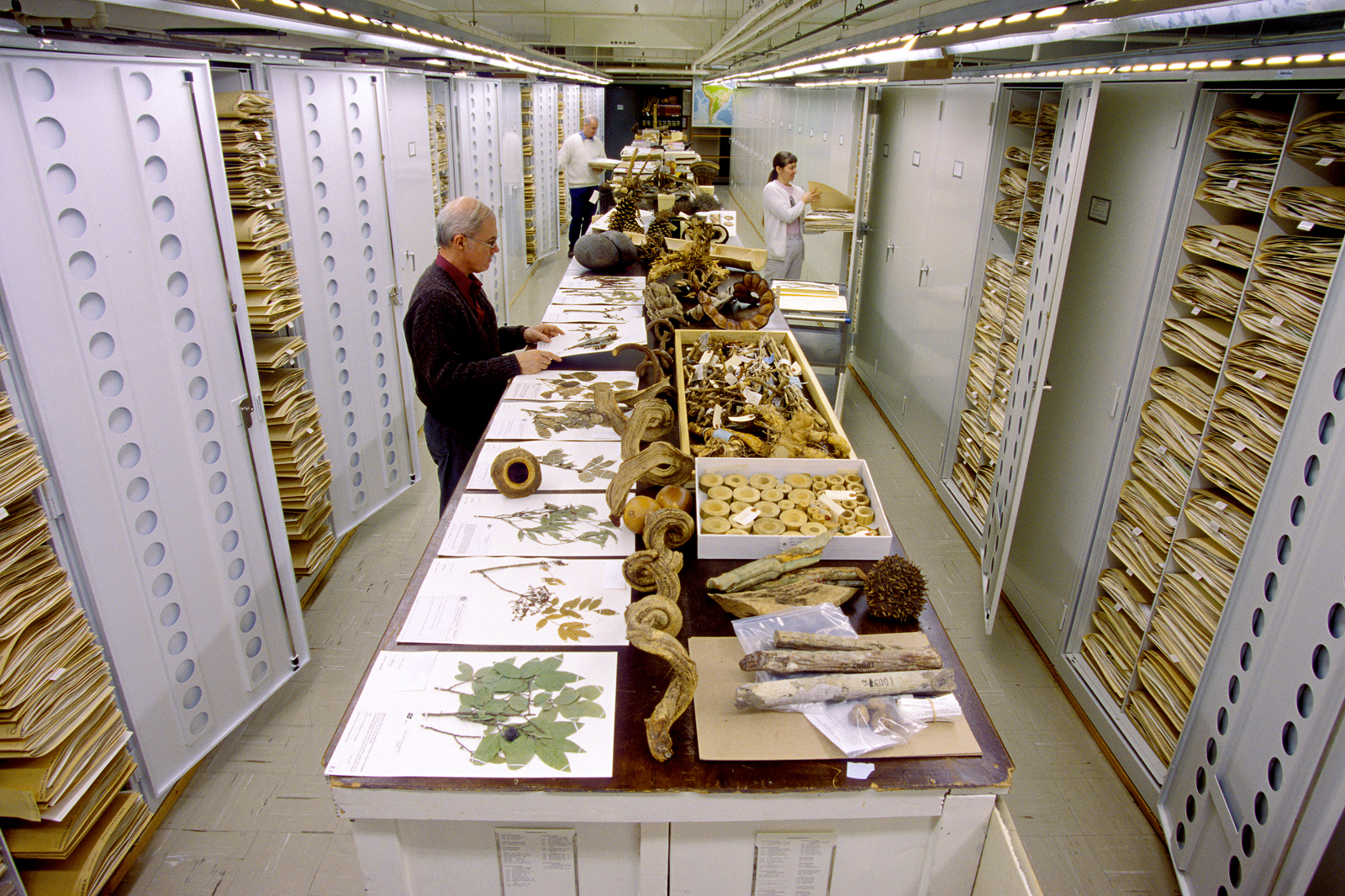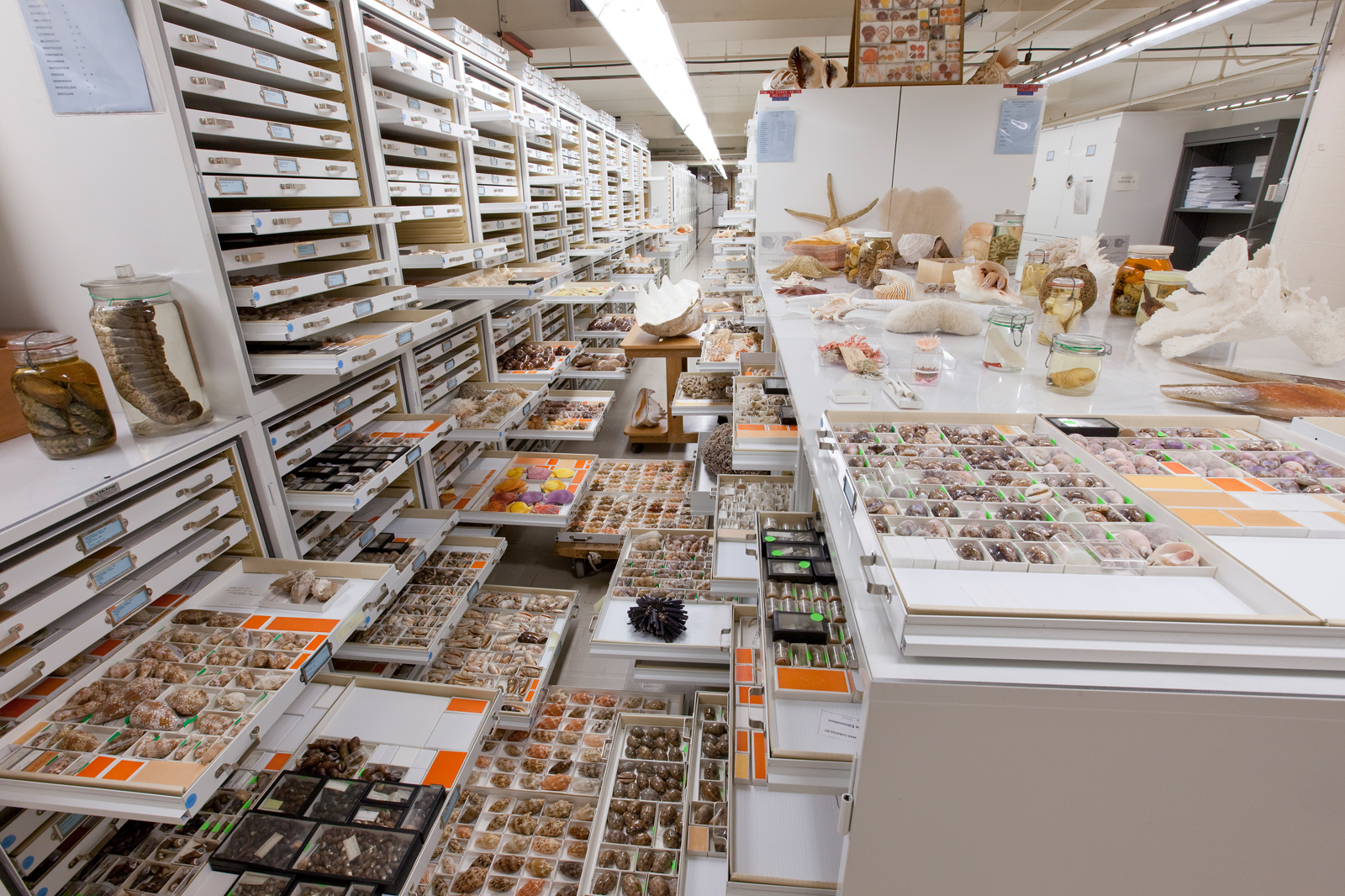
Natural history collections serve as the guardians of an unprecedented archive of the history of our planet and solar system. These collections provide a unique window into the planet’s past, and they are increasingly being used to make actionable forecasts to chart our future. Museums have traditionally acted as independent organizations, but this new approach imagines a global collection composed of all the collections of all the world’s museums.
Read more: Global Natural History Initiative Builds Groundbreaking Database

Botanical collections are displayed at the Smithsonian Institution's National Museum of Natural History. From left to right, botany staff present are Dr. David Bruce Lellinger, Rusty Russell and Carol Kellof. (Photo/ Chip Clark/Smithsonian Instiution)
Lead scientists from a dozen large natural history museums, including Senior Vice President of Science and Chief Curator at the Denver Museum of Nature & Science, Dr. John Demboski, created an innovative but simple framework to rapidly evaluate the size and composition of natural history museum collections globally. The findings “A Global Approach for Natural History Museum Collections” were recently published in the journal Science.
The survey confirmed an aggregate collection of more than 1.1 billion objects, managed by more than 4,500 science staff and nearly 4,000 volunteers. While the aggregate collection is vast, the survey showed that there are conspicuous gaps across museum collections in areas including tropic and polar regions, marine systems and undiscovered arthropod and microbial diversity. These gaps could provide a roadmap for coordinated collecting efforts going forward.
The report is a significant summary, but it is only the first step in surveying the global collection and tapping its enormous potential. Natural history collections are uniquely positioned to inform responses to today’s interlocking crises, but due to lack of funding and coordination, the information embedded in museum collections remains largely inaccessible. With strategic coordination, a global collection has the potential to guide decisions that will shape the future of humanity and biodiversity.

Collections from the Department of Invertebrate Zoology are displayed at the Smithsonian Institution's National Museum of Natural History. (Photo/ Chip Clark/Smithsonian Institution)
By creating this framework and survey, project organizers aim to create a foundation for the global museum network to work together to support future global sustainability, biodiversity and climate frameworks using knowledge gained from museum collections. This will enable all museums to be more strategic as they plan their collection efforts in the future.
The research recognizes that the historic concentration of large museums in North America and Europe can be a barrier to knowledge-sharing and perpetuates power imbalances rooted in the colonial history of museum science. In the future, it is crucial that the global collection also reflects and supports museums elsewhere in the world.
As the authors write, “The long-term security and value of natural history collections depends on developing global and local partnerships that demonstrate not only their relevance for specific scientific, societal and conservation challenges but also for the benefits that apply to every person on the planet.”
This is a groundbreaking initiative connects more than a billion objects in scientific collections across the globe and provides foundation for the global museum network to work together in supporting future global sustainability, biodiversity and climate frameworks using knowledge gained from museum collections.